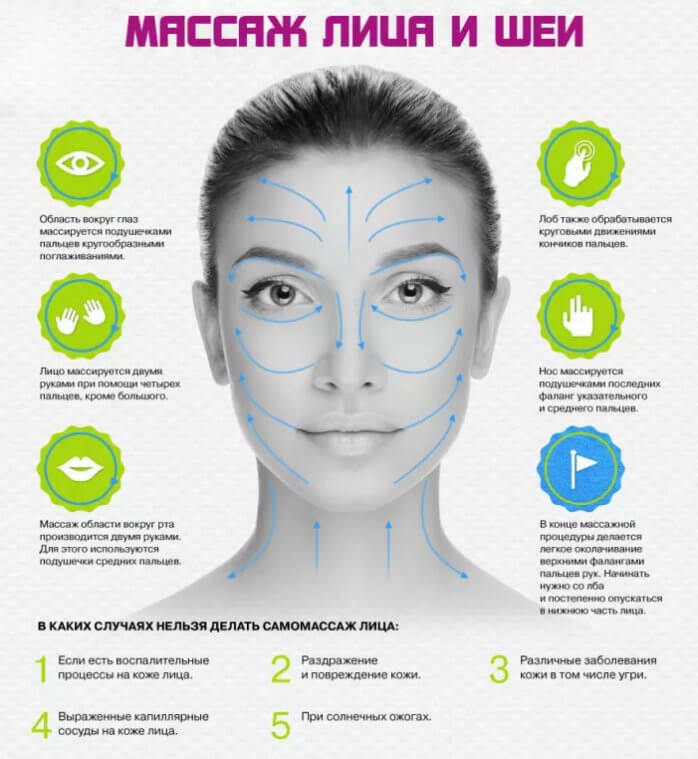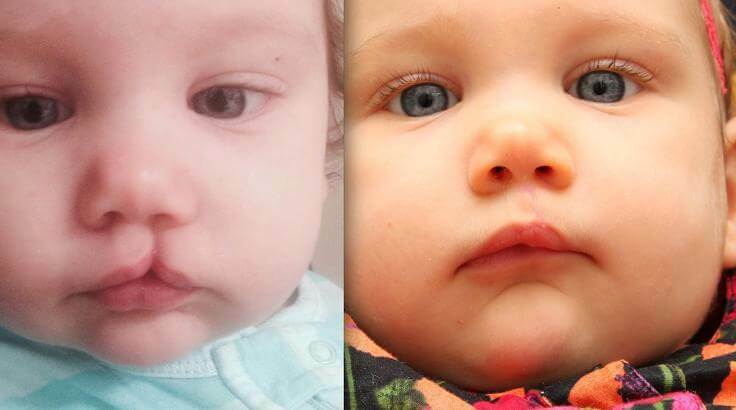Laser scar removal - photos and reviews of the procedure
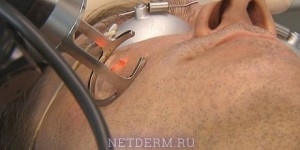 Laser scar removal is a procedure that allows you to get rid of defects in your appearance in a relatively short time, 10-60 minutes. They say that scars and scars adorn men, but with respect to sweet ladies, folk wisdom does not say anything of the kind. Most of the fair sex do not want to put up with any flaws in the skin, whether they are on the body or, especially, on the face. Although from the disfiguring face of the scars the men are not averse to getting rid of.
Laser scar removal is a procedure that allows you to get rid of defects in your appearance in a relatively short time, 10-60 minutes. They say that scars and scars adorn men, but with respect to sweet ladies, folk wisdom does not say anything of the kind. Most of the fair sex do not want to put up with any flaws in the skin, whether they are on the body or, especially, on the face. Although from the disfiguring face of the scars the men are not averse to getting rid of.
Scarring is a natural protective mechanism of the skin, which occurs when healing injuries and wound surfaces. Scars left over from childhood, "pits" from acne and inflammation, stretch marks, post-operative scars sometimes cause many problems with their existence. Most of these markers, as a rule, are lifelong. And if with postakne cosmetologists somehow learned to cope by deep peelings and polishing, then the traces of surgical interventions until recently were considered incurable.
With the advent of laser therapy in aesthetic medicine and this problem has been solved. Laser grinding is amenable to small scars, and pathological keloid scars.
Page Contents:
- 1 What scars can be removed with a laser?
- 2 Methods for laser scar removal
- 3 How to remove scars with laser?
- 4 Reviews on removal of scars by laser
What scars can be removed by laser?
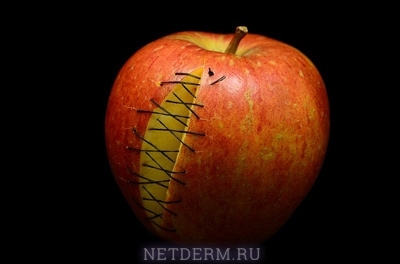 The possibility of correcting a particular scar depends on its type and age."Fresh" scars are removed more easily than chronic ones, but the scar must be completely formed, without signs of inflammation and growth of connective tissues.
The possibility of correcting a particular scar depends on its type and age."Fresh" scars are removed more easily than chronic ones, but the scar must be completely formed, without signs of inflammation and growth of connective tissues.
A wound that has been healed in a normotrophic type does not require any additional therapy. A normal scar is formed flush with the surface of the skin and, at first, is allocated only by color. Gradually, it should turn pale and finally merge with the basic tone of the skin. Sometimes such a scar after resorption looks like a thin white thread and almost invisible to the naked eye, but, if desired, it can be processed with special cosmetics until it disappears completely.
All other types of scarring are pathological forms that do not pass through time independently.
-
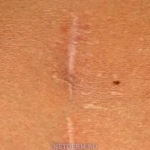 Atrophic scars are formed when there is a lack of collagen fibers in the skin, which are involved in the healing of lesions. In this case, the wound is not tightened in full, and in its place the skin remains thinner. Visually, it looks like sunken flesh-colored flesh or a lighter shade. Examples of atrophic scars are "pockmarks" from acne and an even more common problem - striae, or stretch marks, on the body.
Atrophic scars are formed when there is a lack of collagen fibers in the skin, which are involved in the healing of lesions. In this case, the wound is not tightened in full, and in its place the skin remains thinner. Visually, it looks like sunken flesh-colored flesh or a lighter shade. Examples of atrophic scars are "pockmarks" from acne and an even more common problem - striae, or stretch marks, on the body. -
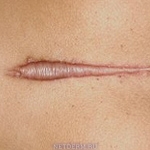 The other extreme - scars hypertrophied - are formed with too intensive reparative function of the skin. Excess collagen leads to the formation of a rough scar tissue that rises above the wound and clearly stands out against the background of healthy skin. The color of the formation can be from light to bright pink and over time has the property of coming to a normal shade. However, the coarse scar itself does not dissolve and can not equal the surface of the rest of the skin.
The other extreme - scars hypertrophied - are formed with too intensive reparative function of the skin. Excess collagen leads to the formation of a rough scar tissue that rises above the wound and clearly stands out against the background of healthy skin. The color of the formation can be from light to bright pink and over time has the property of coming to a normal shade. However, the coarse scar itself does not dissolve and can not equal the surface of the rest of the skin. -
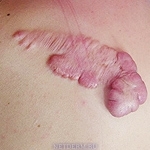 The most unpleasant kind of scar is a manifestation of a keloid disease. Keloid scars cover the wound surface with a coarse, coarse cloth, and they also expand beyond the boundaries of damage. The color of such a pathological scar is far from corporeal: it can acquire a crimson or cyanotic shade, which in due course does not wish to grow pale. In addition to unaesthetic appearance, a keloid can cause other trouble to its owner: itching, pain, etc.
The most unpleasant kind of scar is a manifestation of a keloid disease. Keloid scars cover the wound surface with a coarse, coarse cloth, and they also expand beyond the boundaries of damage. The color of such a pathological scar is far from corporeal: it can acquire a crimson or cyanotic shade, which in due course does not wish to grow pale. In addition to unaesthetic appearance, a keloid can cause other trouble to its owner: itching, pain, etc.
Normal and hypotrophic scars correct most easily. The laser successfully aligns their color, the surface is smoothed. If necessary, the scar tissue in the scar area is compensated by the introduction of medical gels or lipofillers, if the scar is initially deep enough, and it can not be completely ground.
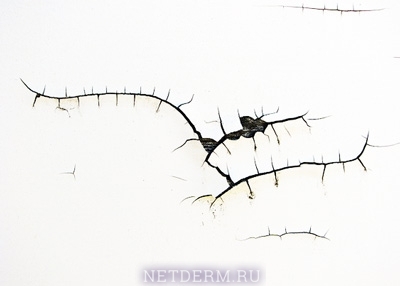 It's harder for the laser to cope with scar hypertrophy. To compare it with healthy skin, you may need several laser therapy sessions. With keloids in general, the situation is ambiguous. The tendency to form keloid scars is a contraindication for most laser procedures.
It's harder for the laser to cope with scar hypertrophy. To compare it with healthy skin, you may need several laser therapy sessions. With keloids in general, the situation is ambiguous. The tendency to form keloid scars is a contraindication for most laser procedures.
The fact is that keloid disease can turn any, even the most minor, damage to the skin into rough scars. When excising such a scar in its place, the same can be formed. Laser impact, although not very traumatic, can also be complicated by the subsequent relapse of the keloid.
However, the chances are still to get rid of the unpleasant build-up, as well as to get a new one, in this case are approximately the same. Much here depends on the professionalism and experience of the doctor, therefore, with keloid scars, only the most serious specialists need to be treated.
Methods of laser scar removal
There are 2 main methods used in laser therapy for scars.
-
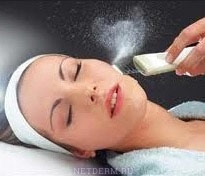 The first is laser peeling, which consists in layer-by-layer evaporation of scar tissue, as a result of which the surface of the scar is ground, and the pathological area of the skin is leveled. This method of scar removal is the most universal and suitable for correcting any defects.
The first is laser peeling, which consists in layer-by-layer evaporation of scar tissue, as a result of which the surface of the scar is ground, and the pathological area of the skin is leveled. This method of scar removal is the most universal and suitable for correcting any defects. -
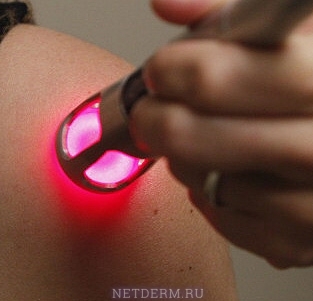 The second technology is called laser scar treatment. It is based on activation of collagen synthesis, due to which there is a faster renewal of the dermis cells, the skin is leveled, becomes dense and elastic, while the depth of the scars decreases. This method is used for minor defects, and most often they are simply supplemented with laser resurfacing.
The second technology is called laser scar treatment. It is based on activation of collagen synthesis, due to which there is a faster renewal of the dermis cells, the skin is leveled, becomes dense and elastic, while the depth of the scars decreases. This method is used for minor defects, and most often they are simply supplemented with laser resurfacing.
Different types of lasers are used for different scars. For example, carbon dioxide( CO2) laser polishes the skin well, evaporating from the surface of the tissue scar by a layer of several microns, and is suitable for treating post-ache, stretch marks and ordinary flat scars. Removal of atrophic scars is preferably accompanied by treatment with a fractal.
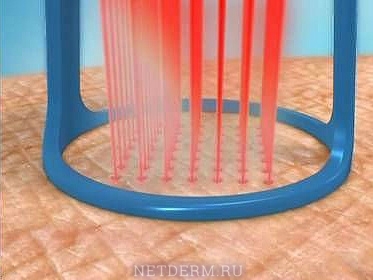 By creating microrails in the deep layers of the dermis, the fractal ray causes active production of elastin and collagen fibers, which contribute to the renewal of tissues in the scar area and cause a general skin rejuvenation.
By creating microrails in the deep layers of the dermis, the fractal ray causes active production of elastin and collagen fibers, which contribute to the renewal of tissues in the scar area and cause a general skin rejuvenation.
A more serious task - the removal of hypertrophied and keloid outgrowths - is possible only for more powerful lasers, erbium and pulsed dye laser.
Removal of excess scar tissue in this case can occur with the use of anti-inflammatory steroid drugs, mesococtails, which enhance the action of the laser.
How to remove scars with a laser?
Laser scar removal is performed on an outpatient basis with local anesthesia. The procedure itself lasts from 5 minutes to an hour, depending on the amount of the defect. A laser beam with short pulses causes extreme heating of scar cells, which are immediately evaporated, gradually reducing the thickness of the scar.
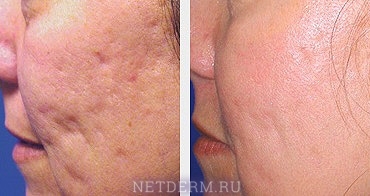 The laser action is based on the effect of photothermolysis: light of a specific spectrum and wavelength affects only strictly defined cells, without involving the surrounding tissues in the process. The strength and depth of the penetration of the laser is established by a computer program that determines the intensity of the exposure to within a micron.
The laser action is based on the effect of photothermolysis: light of a specific spectrum and wavelength affects only strictly defined cells, without involving the surrounding tissues in the process. The strength and depth of the penetration of the laser is established by a computer program that determines the intensity of the exposure to within a micron.
To avoid overheating of the skin in all modern laser systems, a powerful cooling system is used, which increases the safety of the procedure and reduces the sensitivity during its operation.
During the session, the laser also seals the vessels - this eliminates bleeding during and after grinding. After the vessels cease to feed the scar tissue, the risk of a new scar at this site is significantly reduced.
Laser scar removal does not require any special restorative measures. To normal life, the patient can return right after the procedure, following a few simple rules:
- immediately after the session, the place of exposure should be washed, gently soaked with a soft towel, lubricate the doctor's recommended antibacterial ointment and apply a light bandage;
- with a sufficiently large size of the defect may require the use of antibiotics for the early healing and prevention of infection in the scar area;
- if pain remains and burning, you can take anesthetic - within 3-4 days after the procedure, discomfort in the area of exposure is normal;
- redness, puffiness and crusts on the site of the scar should pass within a week, crusts fall off themselves, they can not be torn off in any way, as well as soak, expose to heat( sauna, sauna), rub with a washcloth;
- before and after laser removal of scars can not sunbathe, and on the street must use a good sunscreen;
- it is necessary to temporarily stop taking blood-thinning medications;As well as funds fighting acne - as you know, they increase photosensitivity of the skin and can lead to burns and other complications;
- after 6-8 weeks must appear to the doctor - at this time you can already evaluate the result.
After the first procedure, the visible effect should be noticeable: a decrease in the width and depth of the rumen, blanching of its tissues. This can be sufficient to eliminate minor normotrophic defects. In all other cases, we are talking about the whole course of sessions - from 5 to 8.
The duration of the scar removal process is determined individually and depends on the amount of intervention and the time of the scar's existence - the "older" it is, the more time it will take to get rid of it.
Contraindications to procedure
 Complete disposal of scars, unfortunately, is not available to everyone. Despite all the safety and harmlessness that laser technology has been able to achieve, they are still contraindicated in a number of diseases.
Complete disposal of scars, unfortunately, is not available to everyone. Despite all the safety and harmlessness that laser technology has been able to achieve, they are still contraindicated in a number of diseases.
First of all, this:
- oncology, as well as the propensity to develop tumors, even if they are benign;
- diabetes mellitus, complicated by problems with peripheral circulation and slow healing of lesions;
- poor blood clotting;
- chronic dermatological diseases in the acute stage;
- skin photosensitivity, individual laser intolerance;
- period of carrying and feeding the child;
- age is up to 12 years.
Fans of year-round sunburn deprive themselves of the opportunity to get rid of ugly scars: laser procedures are carried out only on unflavored skin. If you neglect this recommendation, the effect will still not be, but the burns are quite likely.
In addition to thermal skin injury, rare but nonetheless encountering complications of laser scar treatment include:
- hyperpigmentation of the treated area( darkening or redness);
- hypopigmentation is a clarification that is more clearly manifested on tanned skin;
- development of inflammation after infection in coagulated tissues;
- allergy.
How much does laser scar removal cost?
 When using laser technologies in cosmetology, an important factor is their generally high cost. Reduce one small scar can afford any person, but getting rid of multiple scars and keloids - an exercise not cheap. Its cost will consist of the number of procedures, the type of laser used( the cost of a single outbreak on a particular equipment is relevant here), the services and the level of the clinic itself.
When using laser technologies in cosmetology, an important factor is their generally high cost. Reduce one small scar can afford any person, but getting rid of multiple scars and keloids - an exercise not cheap. Its cost will consist of the number of procedures, the type of laser used( the cost of a single outbreak on a particular equipment is relevant here), the services and the level of the clinic itself.
When calculating the approximate budget for the forthcoming procedures, you need to keep in mind that the price is usually set for each centimeter of the processing area. And the zone itself includes not only the scar itself, but also covers the surrounding skin in order to level the border of the transition from healthy tissue to pathological. Thus, the total area of the impact is increased by 2-3 times in comparison with the size of the scar itself.
The average price per square centimeter is about 2000 rubles. In Moscow and the northern capital, this is the lower limit of the price range, whereas in the regions the same procedure can be made cheaper by 500 rubles / cm. Given that the minimum area of exposure is 3 cm, the difference will be no less than 1.5 thousand per session.
Also, prices may vary from the location of the defect: removal of the linear scar on the body is slightly cheaper than on the face, and getting rid of the posture does not back and stretch marks on the abdomen is quite capable of pulling out of the patient's pocket not one thousand cu
On the one hand, laser technology is currently considered to be the only method that actually removes scars. On the other hand, according to statistics, the effectiveness of this procedure in most patients is 40-60%.Someone is enough, but someone will not be happy with this result.
Before deciding on such an expensive procedure, a potential client of a laser clinic should objectively weigh all the pros and cons and, of course, in such a question can not do without the feedback of those who have already experienced the procedure on themselves.
Almost all note that neither the cooling system nor local anesthesia relieves of extremely unpleasant, and sometimes frankly painful sensations during laser treatment. Outbreaks of light are sensitized by patients as an electric shock or hot water burn, the condition after the procedure is severe burning, tightness of the skin, inability to go out if the scars were on the face.
The result obtained is also subjective, and in many respects it depends on the initial condition of the skin.
Feedback on the removal of scars with laser
Review No.1
I decided to remove the scars on the face of the face with a laser, with a 50% discount. About the procedure itself I will not tell: it's painful, unpleasant, the look after is awesome. But the effect is amazing.
I have hardly noticed the scars. Compared with what was - heaven and earth. And it's all for once. I will finish them completely, to the ideal state. The doctor says that there are enough pairs of procedures.
Alice, Moscow
Review №2
Several years ago I had terrible acne poured out after which there were whole craters on my cheeks. Naturally, no creams and ointments from the scars did not help, the last chance to somehow correct the situation was the removal of scars with a laser. The doctor warned me that the scars are deep, and we should not expect a miracle, but I would be satisfied with the 40% that were promised to me.
But, alas, I did not get this. During the procedure, it was painful and scary. Hot flashes and blowing with a jet of icy air - sensations are not for the faint-hearted. Then another 2 days, my entire face was sullied, as if muzzled on the asphalt. But the most terrible, the redness does not pass more than 2 months.
The cork came off, and the pink color and pits are in place. My husband cursed terribly, why did I go to the procedure, and even for such money. He believes that my fossa is not so in the eye rushed, if you do not look closely, it's not noticeable. Then now cheeks like a tomato, for a kilometer to see.
Victoria, St. Petersburg( removing scars after a CO2 laser).
When going for a laser procedure, you need to be prepared for this outcome.


